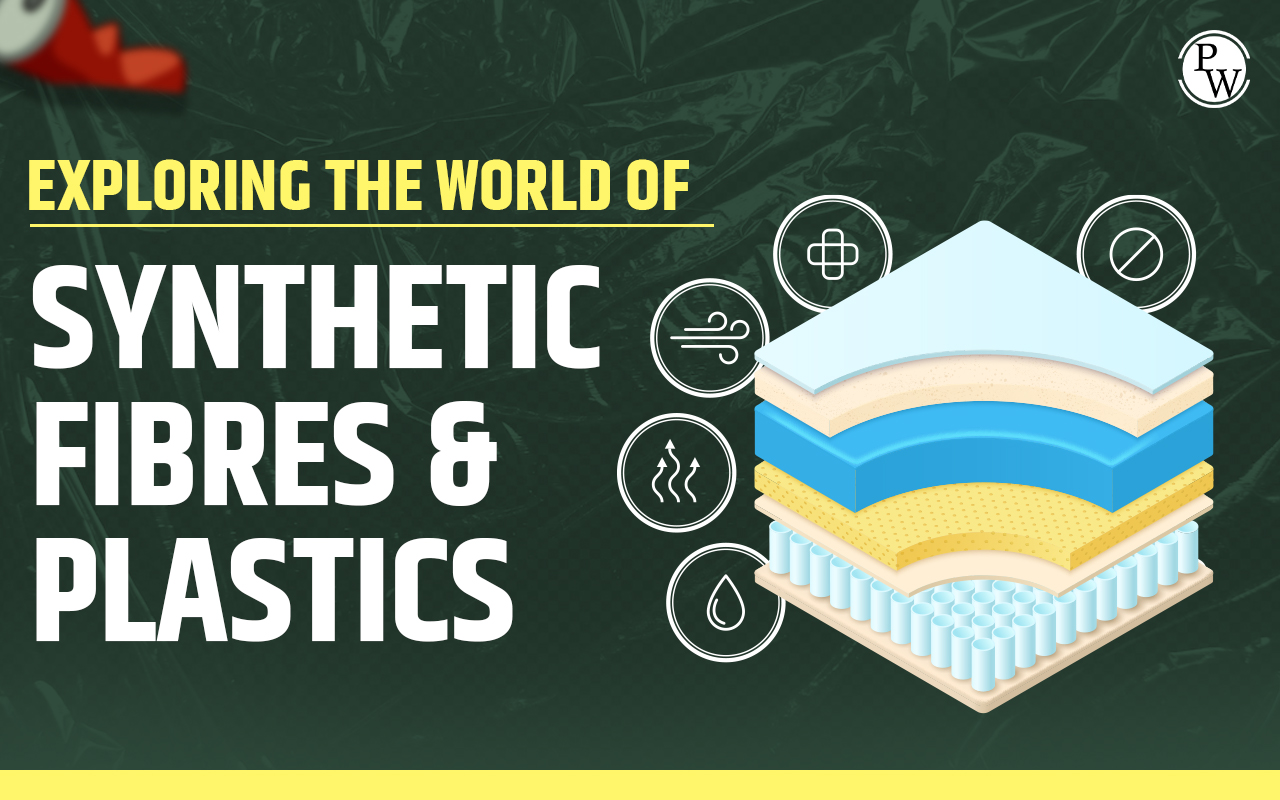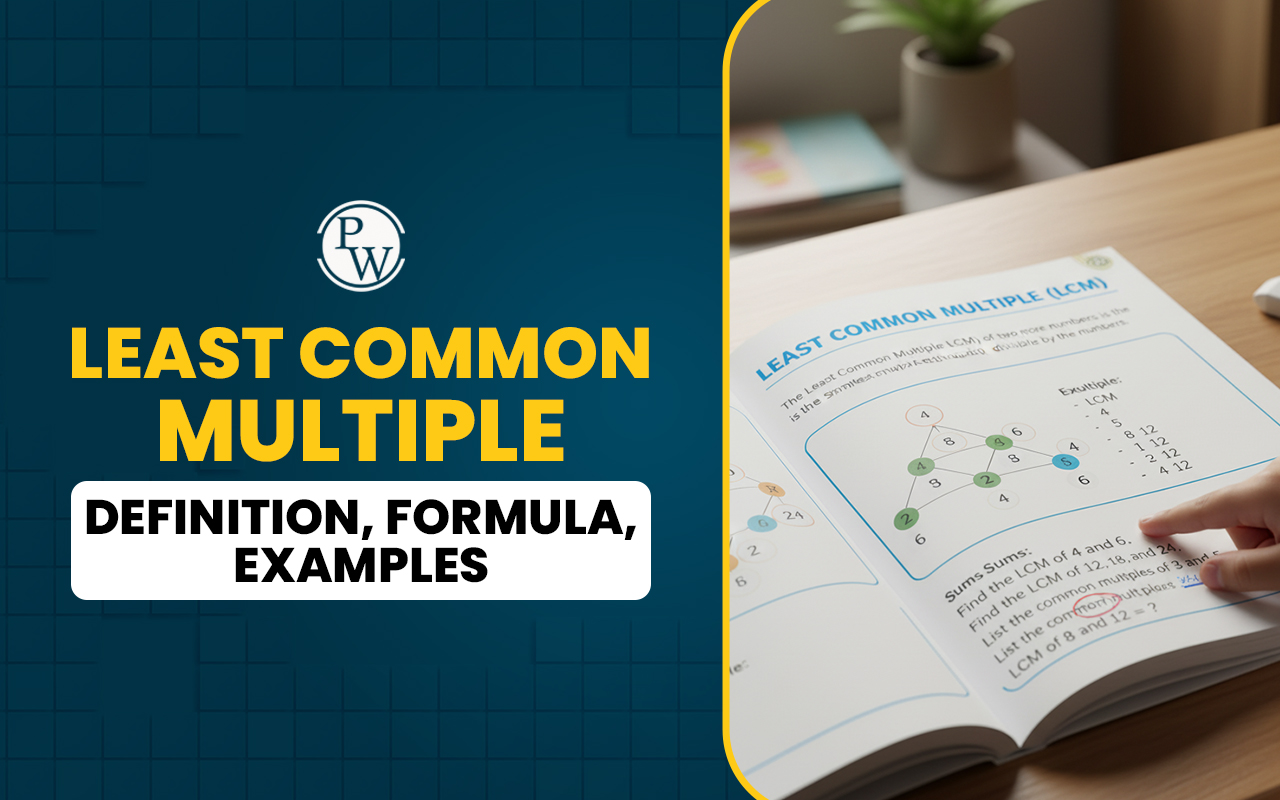
In the world around us, we often come across things made from different materials. Some of these materials are natural, like cotton and wool, while others are not found in nature but are created by humans. Two such important materials are synthetic fibres and plastics . These materials have become a crucial part of our lives, and it's important to learn about them.
[caption id="attachment_4690" align="aligncenter" width="1024"] Synthetic Fibers and Plastics[/caption]
Synthetic Fibers and Plastics[/caption]
What Are Synthetic Fibres?
Can you imagine having clothes that aren't derived from plants or animals? Instead, they are manufactured in a factory! These unique garments are made using synthetic fibres . Created by people through various chemical processes, these fibres are intentionally designed to be strong, durable, and versatile. Unlike natural fibres sourced from plants and animals, synthetic fibres are human-made. Advantages synthetic fibres involves mixing different chemicals and using cool manufacturing techniques. It's quite different from picking cotton off plants or shearing wool from animals. By playing around with these chemicals and methods, we can create fibres with specific properties and uses.Applications of Synthetic Fibres:
Textiles: Think of all the clothes we wear – synthetic fibres are a big part of that. They make everything from sweaters to workout gear. Technical Textiles: These are special textiles used for medical gear, like surgical gowns, or things like protecting crops in agriculture. Automotive and Aerospace: In cars and aeroplanes, synthetic fibres help keep things lightweight and strong, which is awesome for fuel efficiency and safety. Outdoor and Sportswear: If you've got quick-drying, moisture-wicking, durable activewear, chances are it's made from synthetic fibres. [caption id="attachment_4703" align="aligncenter" width="300"] Fundo Class 8 Online Course[/caption]
Fundo Class 8 Online Course[/caption]
Types of Synthetic Fibres
Synthetic fibres encompass a wide array of materials. They are created through specific processes to attain unique properties. Now, let's explore some commonly known types of synthetic fibres such as Rayon, Nylon, Polyester, and Acrylic.- Rayon: Rayon is a semi-synthetic fibre that has an interesting origin. It's derived from natural materials like wood pulp. Through specific chemical treatments, this wood pulp is transformed into fine fibres. Rayon is quite remarkable. It combines the comfort and breathability of natural fibres while retaining the versatility of synthetics. You'll often find it in clothing like shirts, dresses, and linings because of its soft texture that can imitate the feel of fabrics such as cotton or silk.
- Nylon: Nylon is a true synthetic fibre that has made waves in various industries. It was initially created as a substitute for silk in stockings. The process of making nylon involves synthesising fibres from chemicals, a process known as polymerization. The outcome is a fibre that's known for its exceptional strength and elasticity. This is why nylon is found in an array of products, from clothing and activewear to ropes and toothbrush bristles.
- Polyester: Polyester is another synthetic fibre that has become incredibly popular. It's known for its durability and resistance to wrinkles and shrinking. Polyester is manufactured by polymerizing petrochemicals. The resulting fibres are resilient, making them a great choice for clothing, home textiles, and even industrial applications like seatbelts and tire cords. Polyester fabrics can also be engineered to wick moisture away from the body, making them a common choice for sportswear.
- Acrylic: Acrylic is a synthetic fibre with a wool-like appearance and feel. It was developed as a cost-effective alternative to natural wool. The production of acrylic fibres involves using chemicals derived from petroleum and natural gas. Acrylic yarns are popular in knitting and crocheting projects because they imitate the texture of wool while often being more affordable. Additionally, acrylic is commonly used for creating blankets, scarves, and outerwear.
Characteristics of Synthetic Fibres
Synthetic fibres possess a range of unique properties that make them incredibly versatile and widely used in various applications:- Strength and Durability: Imagine having clothes that don't easily tear or wear out. That's the magic of synthetic fibres! Unlike some natural fibres that can be a bit fragile, synthetic fibres are very strong textiles. They're tough and can handle a lot, making them perfect for making stuff like strong backpacks, durable sportswear, and rugged outdoor gear.
- Resistance to Moisture and Chemicals: Have you ever spilled something on your clothes and felt frustrated? Well, synthetic fibres have your back. They're like little water repellents! They don't soak up moisture as easily as natural fibres do, which is why they're great for raincoats and swimsuits. And they're not scared of chemicals either, making them excellent for creating containers for all sorts of tricky substances.
- Low Cost and Easy Maintenance: Making things with synthetic fibres can be easier on the wallet compared to using natural fibres. Plus, taking care of them is a breeze! You can usually toss them in the washing machine without worrying too much. Unlike some delicate natural fabrics that need special handling, synthetic fibres are up for some rough and tumble in the laundry.
- Versatility in Design and Functionality: Synthetic fibres are like chameleons – they can change to match their surroundings! Scientists can tweak them to have special powers, like being flame-resistant or super comfy. This makes them awesome for things like firefighter gear or gym clothes that keep you dry.
- Color Fastness and Texture: Have you ever noticed that your clothes stay colourful wash after wash? Thank synthetic fibres for that! They're great at holding onto colour, which means your favourite shirt can keep its vibrant look for a long time. Also, they can be made to feel really soft or smooth, like silk.
Plastics
Plastics are materials created through the process of polymerization. They possess incredible flexibility and strength. Their unique ability to be moulded into various shapes makes them indispensable in our daily lives. We interact with plastics constantly—water bottles, toys, and even car components all owe their existence to this remarkable substance.What are Plastics?
So, plastics are a bunch of materials that we make from something called polymers. Polymers are like long chains of molecules, and when we put them together through a process called polymerization, we get plastics. It's like building stuff with these tiny building blocks called monomers. This unique structure gives plastics their special qualities, which we'll chat about in a sec.Types of Plastics
Just like there are different flavours of ice cream, there are different types of plastics, each with its own set of cool features:- Polyethylene (PE): This one is lightweight and flexible. You'll find it in things like plastic bags and bottles because it's great for packing stuff up.
- Polypropylene (PP): PP is strong but still pretty flexible. You can spot it in stuff like food containers, car parts, and medical gadgets.
- Polyvinyl Chloride (PVC): PVC is tough and can handle moisture like a champ. It's used in things like pipes, cables, and even snazzy vinyl flooring.
- Polystyrene (PS): PS is light and can be shaped easily. You'll see it hanging out in disposable forks, packing materials, and sometimes even as insulation.
- Polyethylene Terephthalate (PET): PET is all about being transparent, light, and good at holding fizzy drinks. It's the star in those plastic bottles we use to gulp down our favourite sodas.
Plastics as Materials of Choice
Plastics have revolutionised the way we create and use products due to their exceptional properties and versatility. Let's delve deeper into why plastics are chosen as materials for a wide array of applications:- Non-reactive Nature: Plastics are like chill companions – they don't get too involved with stuff around them. They're non-reactive, which means they don't easily mix with other things. This makes plastics superstars when it comes to storing foods, drinks, and even chemicals. You know those plastic containers your mom uses for leftovers? They're like a shield, making sure the spaghetti sauce doesn't get into a chemistry experiment with your cake.
- Lightweight, Strong, and Durable: Imagine being as strong as a rock but light as a feather. Well, that's what plastics bring to the party. They're strong, even though they're not heavy. This awesome combo makes them perfect for stuff where weight matters, like in planes, cars, and building stuff. Plastics team up with these things to make them more efficient and better at what they do.
- Poor Conductors: Plastics are excellent insulators. They don't let heat or electricity move around much. This makes them MVPs in cases where you want to keep things warm or cold, or when you need to keep electricity from going wild. Think about the cover on your phone charger – yup, that's plastic doing its thing to keep you safe.
- Customizability and Design Freedom: Plastics are ultimate in versatility. They're like playdough for grown-ups. You can mould them into any shape you want, which means creative folks can go wild with their designs. Ever notice how your favourite toy or that cool-shaped water bottle seems to come in all sorts of shapes? That's because of plastics and their magical ability to take any form.
- Cost-Efficiency and Accessibility: Plastics aren't just excellent, they're cost-effective too. Making things with plastics often doesn't break the bank, and that's a win for everyone. This means things made from plastics – from your toothbrush to your favourite kitchen gadget – are more affordable and available.
Plastics and the Environment
While plastics have brought convenience and innovation to our lives, they also present significant challenges for the environment. Let's delve into the environmental aspects of plastics and their impact:- Plastic Waste: You know how plastics are tough and durable? Well, that's a problem when they end up as waste. When people throw away plastic stuff, like bottles and bags, those plastics stick around for a really long time. They can pile up in oceans, forests, and landfills, making the place look messy and causing trouble for animals that might eat or get stuck in them.
- Pollution: When plastics break down into tiny pieces called microplastics, they can infiltrate various environments like water and soil. This pollution poses a significant threat to animals and plants, particularly those residing in aquatic habitats. The ingestion of these microplastics by fish and other creatures not only harms them but also impacts us when we consume seafood.
- Single-Use Plastics: You know those things you use once and then throw away, like straws and disposable cups? Those are called single-use plastics. They're a big problem because they pile up quickly and don't go away easily. They're like party guests who don't know when to leave!
Addressing Plastic Pollution: The 4 R's
- Reduce: To start solving this issue, we need to use fewer single-use plastics. That means opting for reusable bags, containers, and bottles instead of using things only once and then tossing them.
- Reuse: Reusing plastic items, like containers or bags, gives them a longer life. When we reuse stuff, we're not constantly making new plastics, which is a good thing.
- Recycle: Recycling is a way to turn used plastic into new stuff. By recycling, we can keep plastic out of landfills and give it a second shot at being useful.
- Rethink: We should also rethink how we use plastic and consider alternatives. If something has a lot of plastic packaging, maybe there's a different option that's kinder to the environment.
Watch Full Vedio of Synthetic Fibres and Plastics
Final Thoughts
Knowing about synthetic fibres and plastics gives us insights into the amazing materials that shape our world. From the clothes we wear to the things we use, these materials play a big role. By learning about their characteristics and impacts, we can make better choices for ourselves and our planet.| Related Links | |
|---|---|
| NCERT Solutions for Class 8 | Class 8 Syllabus |
Synthetic Fibres and Plastics FAQs
Q1. What are the 5 synthetic fibres? Ans. The five synthetic fibres are nylon, polyester, acrylic, rayon, and spandex. These fibres are manufactured through chemical processes and possess various properties suitable for different applications in the textile industry. Q2. What are some examples of plastic fibres? Ans. Examples of plastic fibers include polyester, commonly used in clothing and textiles, and nylon, often used for making strong and durable materials like ropes and fishing nets. Q2. What is synthetic made of? Ans. Synthetics are typically composed of artificial materials created through chemical processes, often involving polymers derived from petrochemicals.What are the 5 synthetic fibres?
The five synthetic fibres are nylon, polyester, acrylic, rayon, and spandex. These fibres are manufactured through chemical processes and possess various properties suitable for different applications in the textile industry.
What are some examples of plastic fibres?
Examples of plastic fibers include polyester, commonly used in clothing and textiles, and nylon, often used for making strong and durable materials like ropes and fishing nets
What is synthetic made of?
Synthetics are typically composed of artificial materials created through chemical processes, often involving polymers derived from petrochemicals.
Talk to a counsellorHave doubts? Our support team will be happy to assist you!

Free Learning Resources
PW Books
Notes (Class 10-12)
PW Study Materials
Notes (Class 6-9)
Ncert Solutions
Govt Exams
Class 6th to 12th Online Courses
Govt Job Exams Courses
UPSC Coaching
Defence Exam Coaching
Gate Exam Coaching
Other Exams
Know about Physics Wallah
Physics Wallah is an Indian edtech platform that provides accessible & comprehensive learning experiences to students from Class 6th to postgraduate level. We also provide extensive NCERT solutions, sample paper, NEET, JEE Mains, BITSAT previous year papers & more such resources to students. Physics Wallah also caters to over 3.5 million registered students and over 78 lakh+ Youtube subscribers with 4.8 rating on its app.
We Stand Out because
We provide students with intensive courses with India’s qualified & experienced faculties & mentors. PW strives to make the learning experience comprehensive and accessible for students of all sections of society. We believe in empowering every single student who couldn't dream of a good career in engineering and medical field earlier.
Our Key Focus Areas
Physics Wallah's main focus is to make the learning experience as economical as possible for all students. With our affordable courses like Lakshya, Udaan and Arjuna and many others, we have been able to provide a platform for lakhs of aspirants. From providing Chemistry, Maths, Physics formula to giving e-books of eminent authors like RD Sharma, RS Aggarwal and Lakhmir Singh, PW focuses on every single student's need for preparation.
What Makes Us Different
Physics Wallah strives to develop a comprehensive pedagogical structure for students, where they get a state-of-the-art learning experience with study material and resources. Apart from catering students preparing for JEE Mains and NEET, PW also provides study material for each state board like Uttar Pradesh, Bihar, and others
Copyright © 2025 Physicswallah Limited All rights reserved.
Get App









